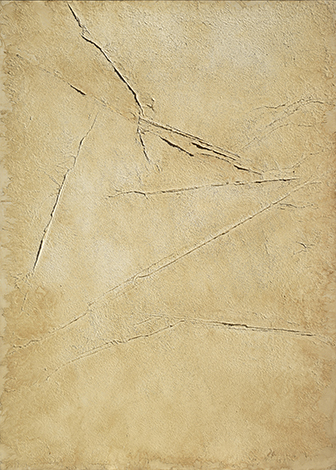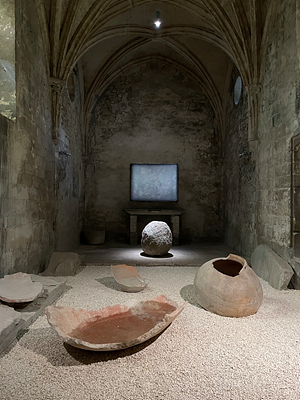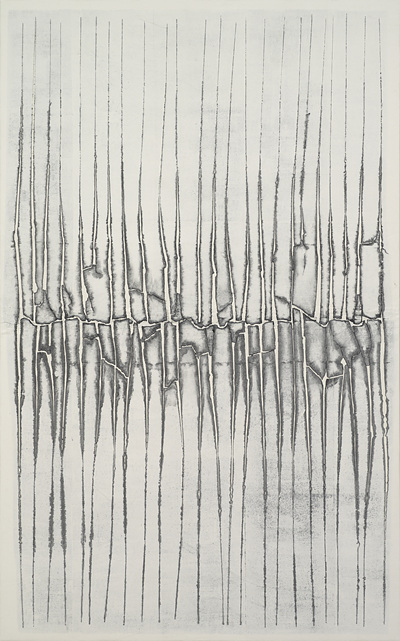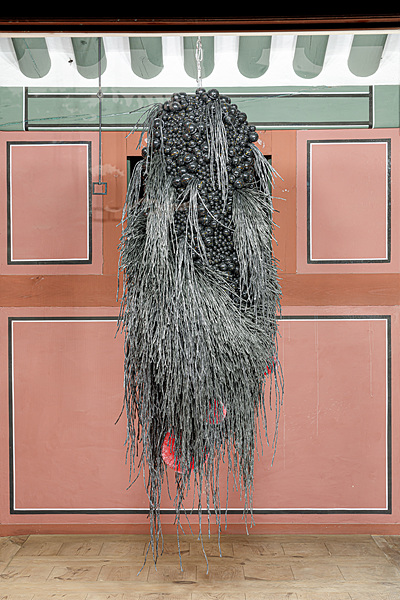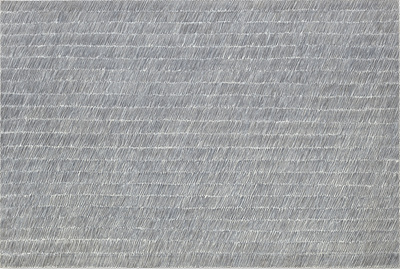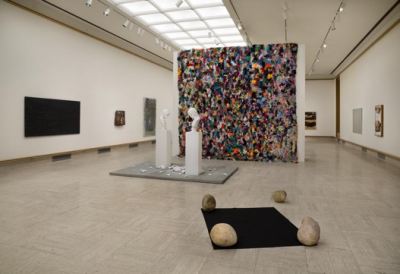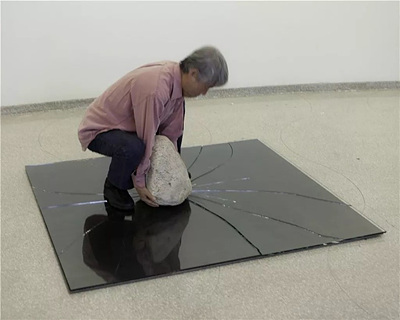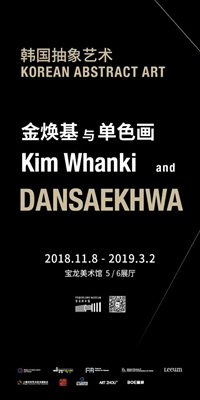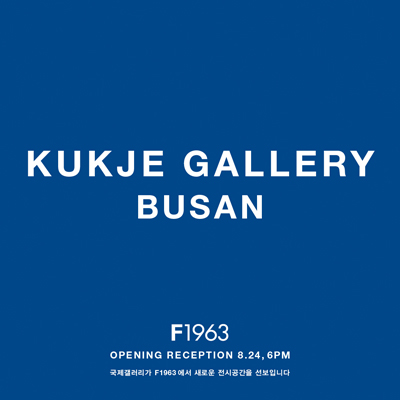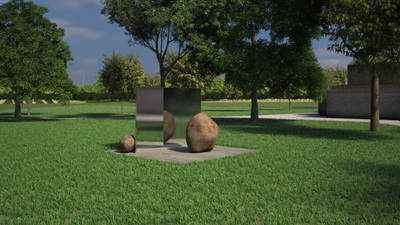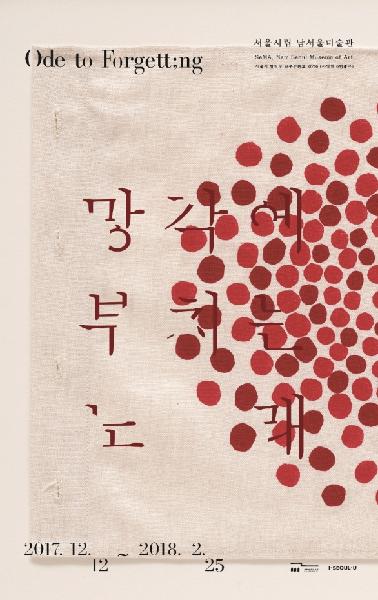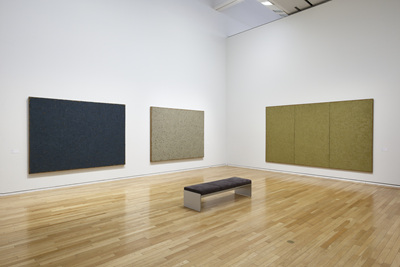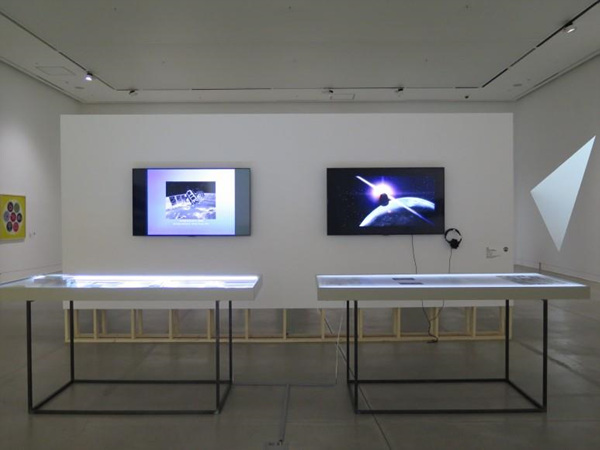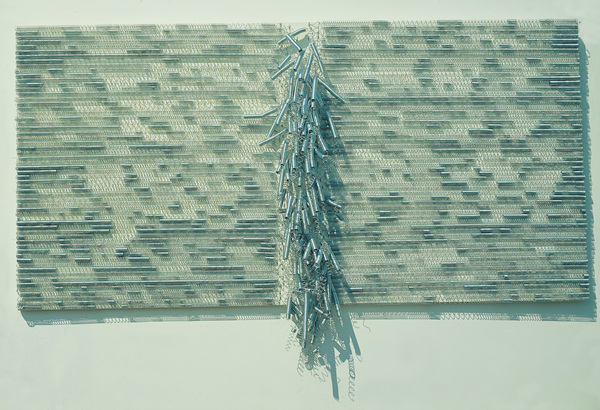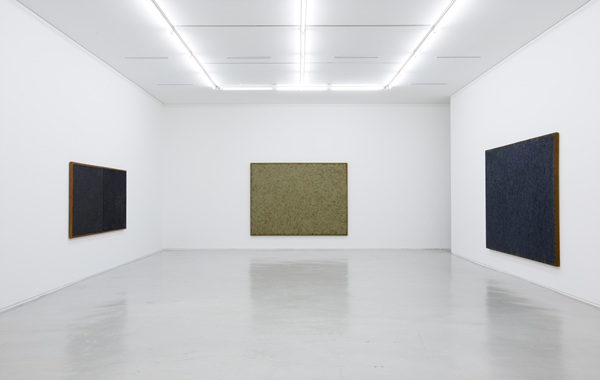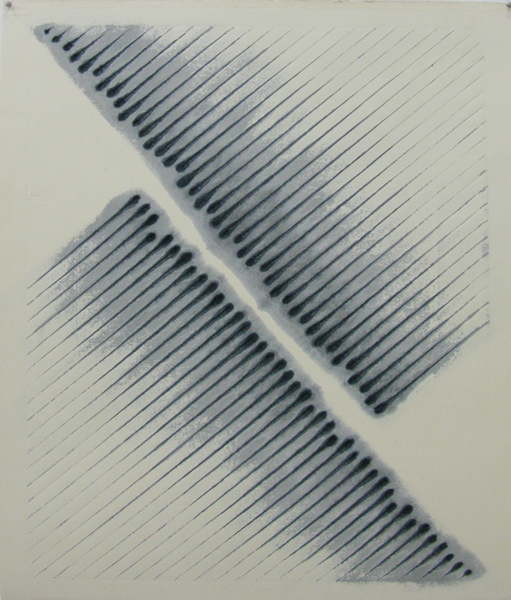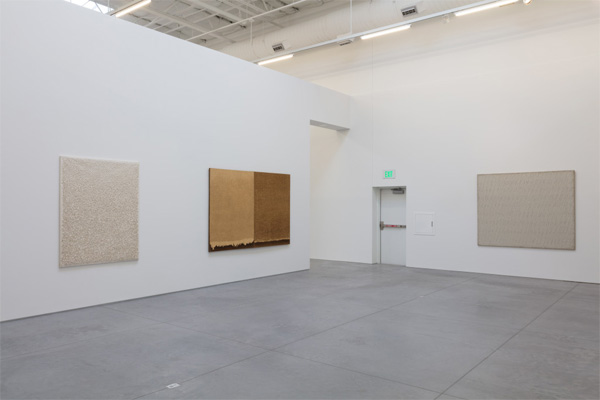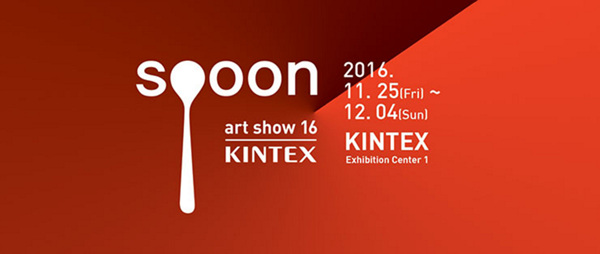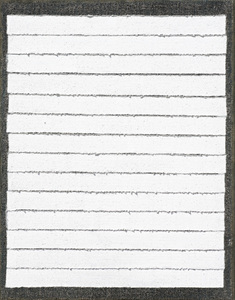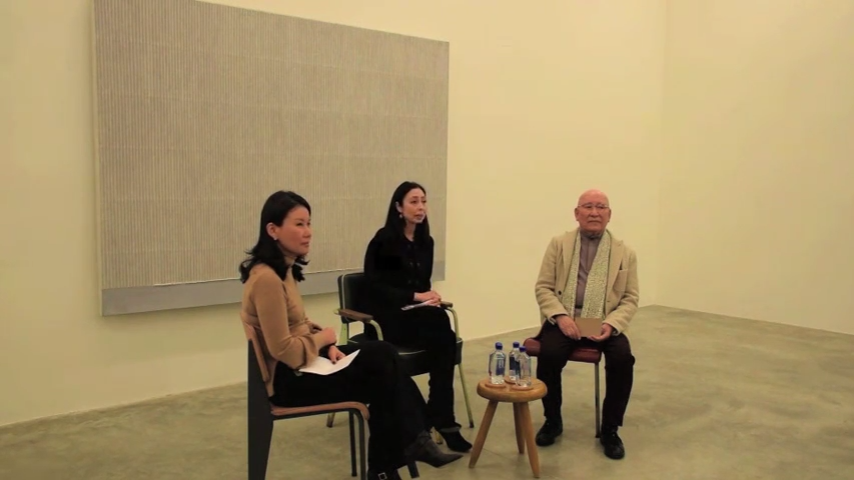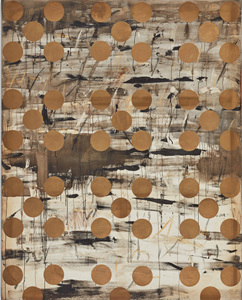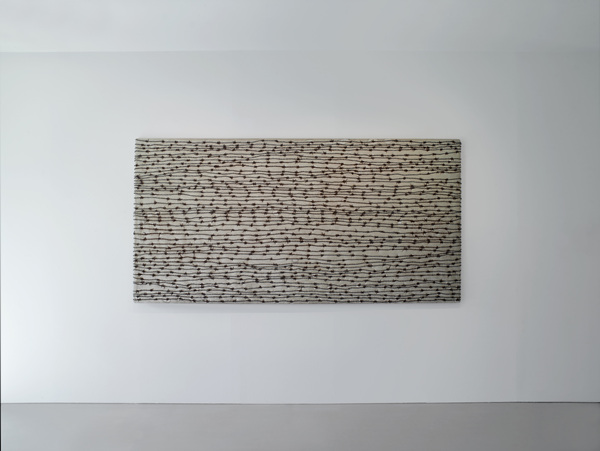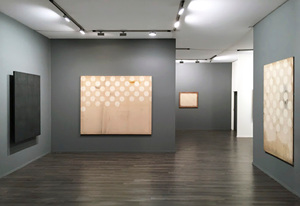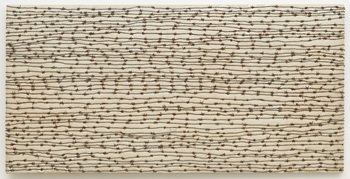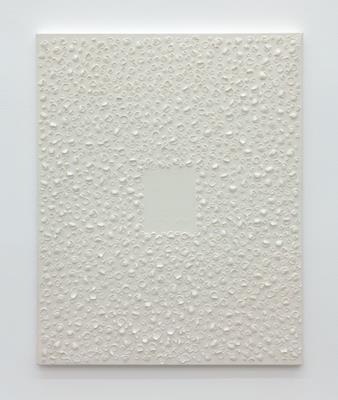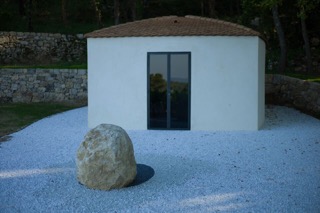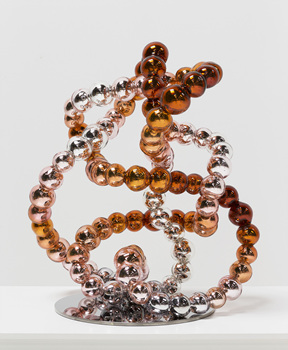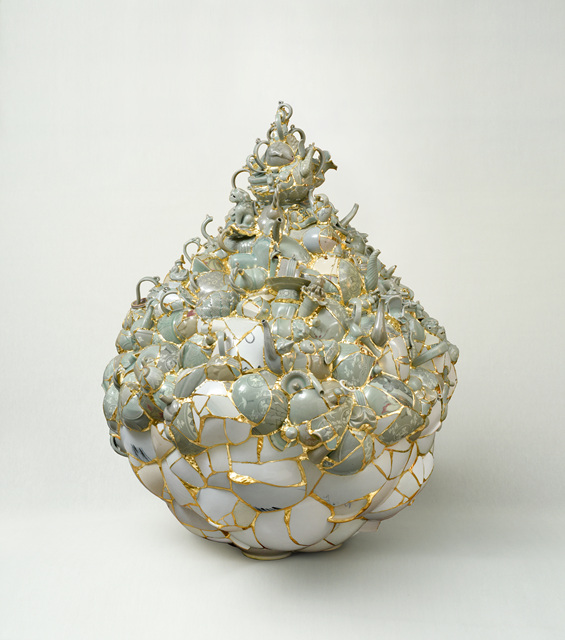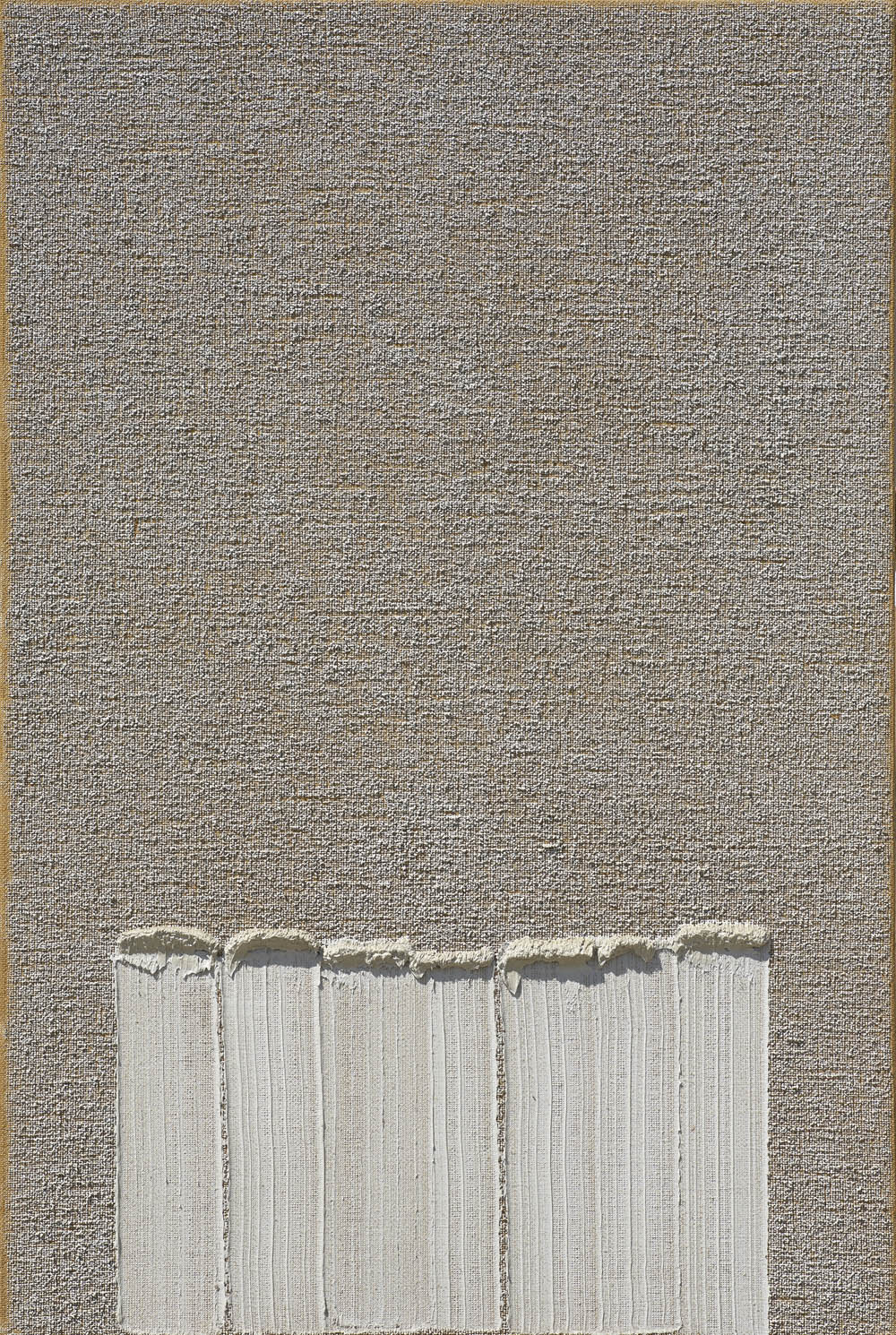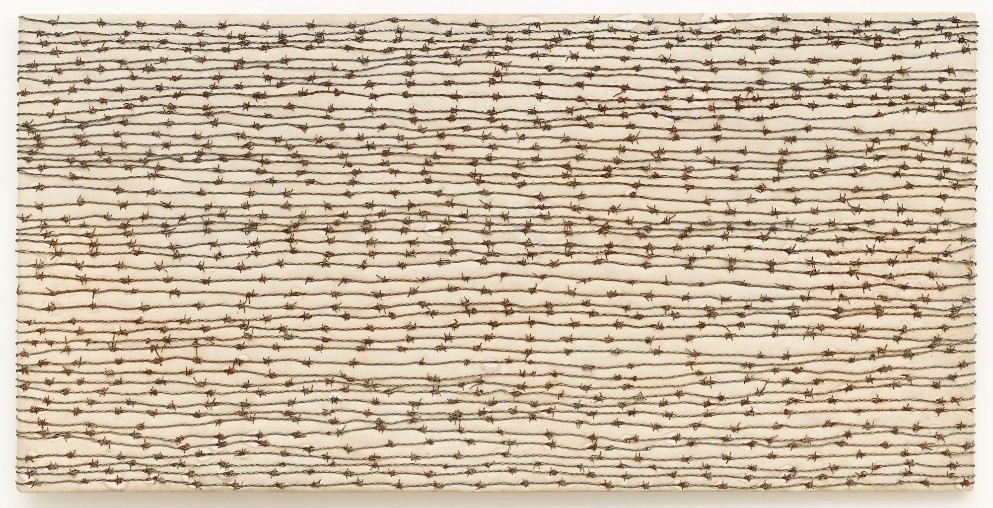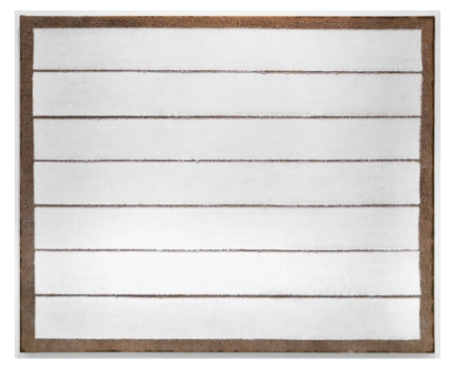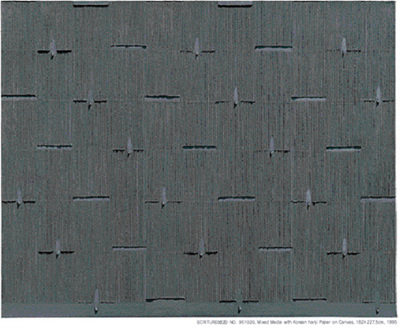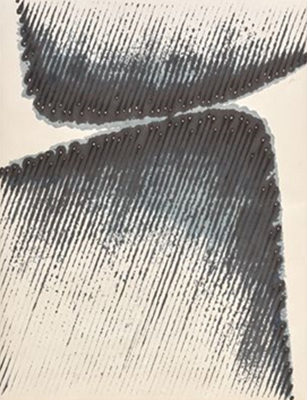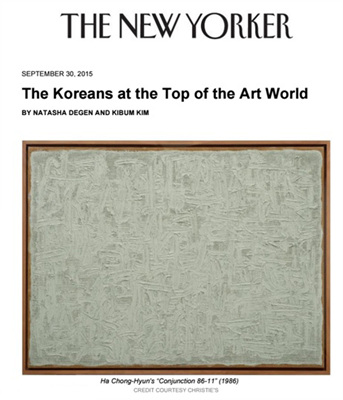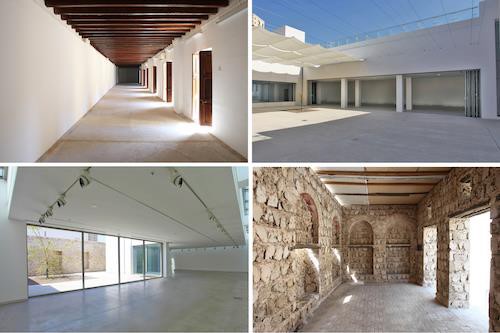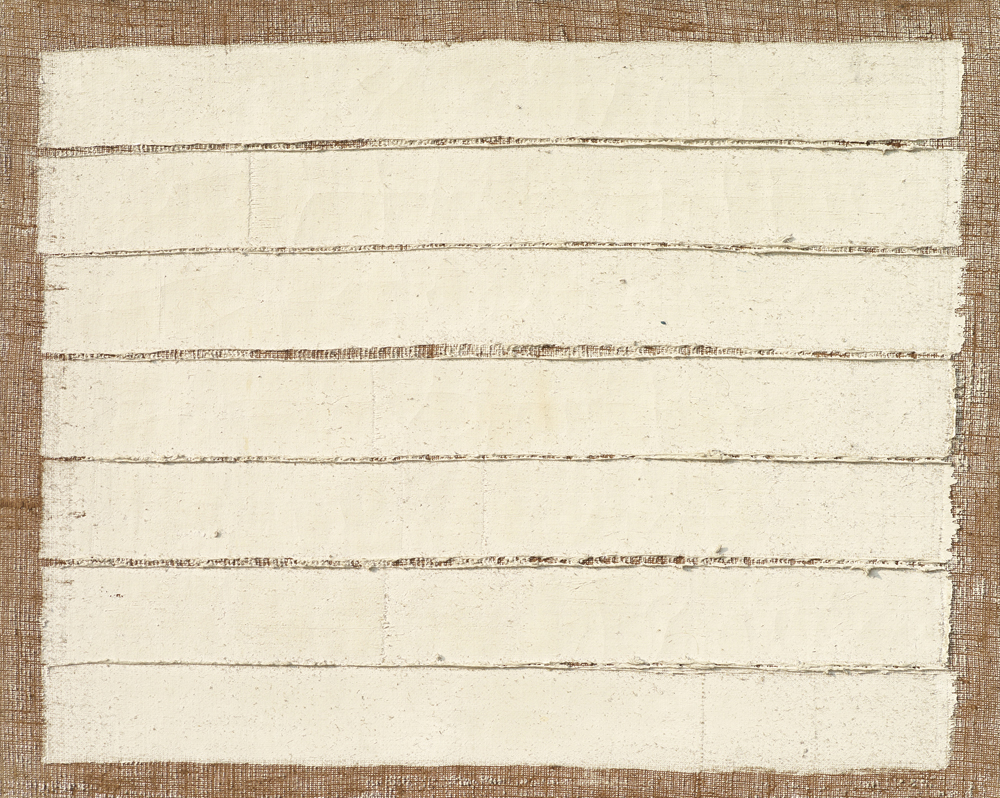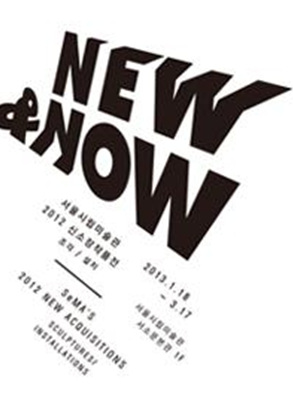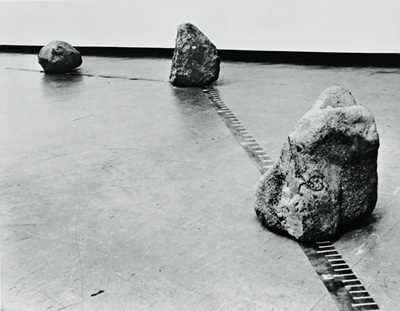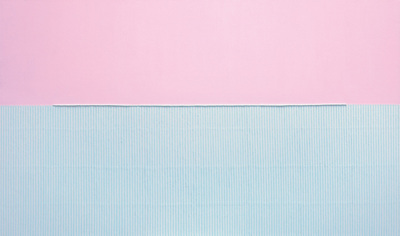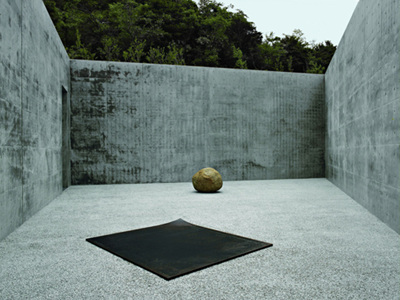 When Process becomes Form: Dansaekhwa and Korean abstraction | KUKJE GALLERY
When Process becomes Form: Dansaekhwa and Korean abstraction | KUKJE GALLERY

Feb 20, 2016 - Apr 24, 2016
Seoul
INTRODUCTION
Installation View of When Process becomes Form: Dansaekhwa and Korean abstraction
2016
Copyright © Boghossian Foundation – Villa Empain
Image provided by Kukje Gallery
When Process Becomes Form: Dansaekhwa and Korean Abstraction is the first comprehensive exhibition in Belgium of a generation of loosely affiliated Korean artists whose negotiation of abstraction has become known as Dansaekhwa. The exhibition presents Dansaekhwa’s leading figures: Chung Chang-Sup (1927 - 2011), Chung Sang-Hwa (b.1932), Ha Chong-Hyun (b. 1935), Kim Whanki (1913 - 1974), Kwon Young-Woo (1926 - 2013), Lee Ufan (b. 1936), and Park Seo-Bo (b. 1931). It brings together more than fifty seminal paintings from both museum and private collections, ranging from the 1960s until the 1980s. In addition, the exhibition includes an extensive corpus of archival materials and documents.
Working at the crossroads of diverse stylistic influences and within a politically and socially charged context, the seven artists featured in this exhibition employ abstraction as a means of synthesis and innovation. In doing so, they have succeeded in articulating a distinct visual language that champions form and material over the outright political. Their use of pattern and repetition stems from an emphasis on their process-driven approach that places the "act of making" at the very heart of their artistic practice. Transcending the specificities of political and social conflicts, the masterpieces that are on display present the viewer with a timeless and truly universal visual language. It is in its distinct aesthetic, which is able to transcend all cultural barriers and speak to the visual sensibilities and inclinations in all of us, that the power of Dansaekhwa ultimately resides.
For the generation of artists connected to Dansaekhwa, being modern was never a matter of identification with a Western model of artistic production. Neither was it a faith in a universality that levels the particularities of distinctly different conceptual and formal approaches to art-making. For most of the artists presented here, working and living in Korea through the 1960s and until the 1980s, modernity had a specific meaning, one that was associated with an independence from modernization and a criticism of globalization. These are larger critical questions. How can art history be global? How can the rigid notions of center versus periphery be reconfigured? How can the contributions of non-canonical artists be acknowledged beyond the reductive paradigms of normative comparisons? These are among the questions that have increasingly punctuated the discourse surrounding the critical reflection on the notion of multiple modernities. This is where Dansaekhwa becomes poignantly relevant. When examined within its local context as well as against the theoretical and formal concerns and advancements that were simultaneously at play elsewhere, Dansaekhwa emerges as a significant example of how modernism can operate along several axes at once, both geographically and conceptually.
A multilingual (French, Flemish and English) 150-page, fully illustrated catalogue will be published in conjunction with the exhibition. The publication features an extensive curatorial essay on the history of Dansaekhwa, full artist biographies and a comprehensive timeline of the movement's evolution within the context of Korea's broader modern history.
Curated by Sam Bardaouil and Till Fellrath
Organized with Kukje Gallery and Tina Kim Gallery
국제갤러리는 2016년 2월 벨기에 브뤼셀에 소재한 보고시안 재단의 빌라 엉빵 (Villa Empain)에서 열리는 <과정이 형태가 될 때: 단색화와 한국 추상미술 (When Process Becomes Form: Dansaekhwa and Korean Abstraction)> 특별전을 보고시안 재단과 협력으로 개최한다. 국제갤러리는 2015년 5월 제 56회 베니스 비엔날레 병행전시의 일환으로 <단색화>전을 개최하여 1970년대 한국 현대미술의 대표적인 성과로 평가되는 단색화의 거장들의 작품을 국제무대에 소개한바 이번 보고시안재단과의 협력 전시를 통해 지속적으로 세계주요화단에 단색화에 대한 관심을 주도하고자 한다.
<과정이 형태가 될 때: 단색화와 한국 추상미술>전은 2월 20일부터 4월 24일까지 열리며 대표적인 단색화 작가 권영우, 김환기, 박서보, 이우환, 정상화, 정창섭, 하종현의 1970년대 및 80년대 주요작품 50여 점이 소개된다.단색화는 당시 한국의 정치적, 사회적 현실을 경험한 세대인 해당 작가들의 각기 다른 고유한 평면에 대한 추구를 기반으로 당시로서는 파격적으로 전통적인 그리기에 대한 접근 및 혁신적인 미학적 담론을 발전시켜온바 있다.
이 전시는 각 작가들이 지니는 작품방식의 고유한 행위성을 기반으로 반복 및 시간의 축적을 기반으로 구현한 정신적인 추상의 흔적을 살펴볼 수 있으며, 당시 전환기의 역사적인 측면과 더불어 전통적인 회화의 재료 및 방식이 실험적으로 도전했던 궤적을 발견할 수 있다. 국제갤러리는 이번 <과정이 형태가 될 때: 단색화와 한국 추상미술>전을 보고시안 재단과 협력 개최하며 한국의 자주적인 미학 운동으로 자리잡은 단색화의 전개 과정과 그것이 동시대에서 발견되는 의미와 가치를 심도 있게 풀어내고자 한다.
해당 전시 외에도 전시장 내 전문적인 아카이브 룸을 통해 단색화의 역사적 맥락을 보여주는 단색화 관련 주요 서적, 전시도록, 포스터를 포함한 시청각 자료를 구성하여 단색화의 역사 및 한국 전후 사회상에 대한 심도 있는 이해를 돕는다. 또한 본 전시와 연계되어 단색화의 연혁과 저명한 학자들의 평론이 담긴 서적을 출간 예정에 있으며 서적에 실리는 모든 글은 프랑스어, 플랑드르어와 영어로 번역되어 전세계에 단색화를 소개하는 주요한 참고 자료로 지속적으로 활용될 것이다.
전시를 기획하는 틸 펠라스 (Till Fellrath)와 샘 바더윌 (Sam Bardaouil)은 2009년 뉴욕과 뮌헨을 기반으로 한 전시기획플랫폼 아트 리오리엔티드 (Art Reoriented)를 설립, 국제적으로 활발하게 활동 중인 독립 큐레이터 그룹이자 비평가이다. 이들은 미술사적 가치를 가진 동시대 작가들의 전시를 여러 차례 기획한 바 있으며 그 대표전시 이력들은 아래와 같다. 2013년 제 55회 베니스비엔날레 레바논 파빌리온 커미셔너로 참여, 2014년 광주시립미술관에서 중동현대미술특별전을 개최, 2016년 부산시립미술관에서 비디오아트 기획전 개최 등을 통해 탁월한 감각을 인정받았다. 뿐만 아니라 일찍이 한국 단색화에 관심을 가진 펠라스와 바더윌은 국제갤러리 <단색화의 예술> 전 대담에 주요 패널로 참가하였고, 2014년 미국 뉴욕 알렉산더 그레이에서 단색화전 <Overcoming the Modern - Dansaekhwa: The Korean Monochrome Movement> 을 기획하는 등 적극적으로 한국 단색화를 세계 무대에 소개하였다. 이번 <단색화>전은 특별하게도 해외 큐레이터의 기획으로 또 다른 국제적인 관점의 한국의 단색화를 국제미술계의 주요한 궤적으로 삼는 소중한 기회가 될 것이다.
2016
Copyright © Boghossian Foundation – Villa Empain
Image provided by Kukje Gallery
When Process Becomes Form: Dansaekhwa and Korean Abstraction is the first comprehensive exhibition in Belgium of a generation of loosely affiliated Korean artists whose negotiation of abstraction has become known as Dansaekhwa. The exhibition presents Dansaekhwa’s leading figures: Chung Chang-Sup (1927 - 2011), Chung Sang-Hwa (b.1932), Ha Chong-Hyun (b. 1935), Kim Whanki (1913 - 1974), Kwon Young-Woo (1926 - 2013), Lee Ufan (b. 1936), and Park Seo-Bo (b. 1931). It brings together more than fifty seminal paintings from both museum and private collections, ranging from the 1960s until the 1980s. In addition, the exhibition includes an extensive corpus of archival materials and documents.
Working at the crossroads of diverse stylistic influences and within a politically and socially charged context, the seven artists featured in this exhibition employ abstraction as a means of synthesis and innovation. In doing so, they have succeeded in articulating a distinct visual language that champions form and material over the outright political. Their use of pattern and repetition stems from an emphasis on their process-driven approach that places the "act of making" at the very heart of their artistic practice. Transcending the specificities of political and social conflicts, the masterpieces that are on display present the viewer with a timeless and truly universal visual language. It is in its distinct aesthetic, which is able to transcend all cultural barriers and speak to the visual sensibilities and inclinations in all of us, that the power of Dansaekhwa ultimately resides.
For the generation of artists connected to Dansaekhwa, being modern was never a matter of identification with a Western model of artistic production. Neither was it a faith in a universality that levels the particularities of distinctly different conceptual and formal approaches to art-making. For most of the artists presented here, working and living in Korea through the 1960s and until the 1980s, modernity had a specific meaning, one that was associated with an independence from modernization and a criticism of globalization. These are larger critical questions. How can art history be global? How can the rigid notions of center versus periphery be reconfigured? How can the contributions of non-canonical artists be acknowledged beyond the reductive paradigms of normative comparisons? These are among the questions that have increasingly punctuated the discourse surrounding the critical reflection on the notion of multiple modernities. This is where Dansaekhwa becomes poignantly relevant. When examined within its local context as well as against the theoretical and formal concerns and advancements that were simultaneously at play elsewhere, Dansaekhwa emerges as a significant example of how modernism can operate along several axes at once, both geographically and conceptually.
A multilingual (French, Flemish and English) 150-page, fully illustrated catalogue will be published in conjunction with the exhibition. The publication features an extensive curatorial essay on the history of Dansaekhwa, full artist biographies and a comprehensive timeline of the movement's evolution within the context of Korea's broader modern history.
Curated by Sam Bardaouil and Till Fellrath
Organized with Kukje Gallery and Tina Kim Gallery
국제갤러리는 2016년 2월 벨기에 브뤼셀에 소재한 보고시안 재단의 빌라 엉빵 (Villa Empain)에서 열리는 <과정이 형태가 될 때: 단색화와 한국 추상미술 (When Process Becomes Form: Dansaekhwa and Korean Abstraction)> 특별전을 보고시안 재단과 협력으로 개최한다. 국제갤러리는 2015년 5월 제 56회 베니스 비엔날레 병행전시의 일환으로 <단색화>전을 개최하여 1970년대 한국 현대미술의 대표적인 성과로 평가되는 단색화의 거장들의 작품을 국제무대에 소개한바 이번 보고시안재단과의 협력 전시를 통해 지속적으로 세계주요화단에 단색화에 대한 관심을 주도하고자 한다.
<과정이 형태가 될 때: 단색화와 한국 추상미술>전은 2월 20일부터 4월 24일까지 열리며 대표적인 단색화 작가 권영우, 김환기, 박서보, 이우환, 정상화, 정창섭, 하종현의 1970년대 및 80년대 주요작품 50여 점이 소개된다.단색화는 당시 한국의 정치적, 사회적 현실을 경험한 세대인 해당 작가들의 각기 다른 고유한 평면에 대한 추구를 기반으로 당시로서는 파격적으로 전통적인 그리기에 대한 접근 및 혁신적인 미학적 담론을 발전시켜온바 있다.
이 전시는 각 작가들이 지니는 작품방식의 고유한 행위성을 기반으로 반복 및 시간의 축적을 기반으로 구현한 정신적인 추상의 흔적을 살펴볼 수 있으며, 당시 전환기의 역사적인 측면과 더불어 전통적인 회화의 재료 및 방식이 실험적으로 도전했던 궤적을 발견할 수 있다. 국제갤러리는 이번 <과정이 형태가 될 때: 단색화와 한국 추상미술>전을 보고시안 재단과 협력 개최하며 한국의 자주적인 미학 운동으로 자리잡은 단색화의 전개 과정과 그것이 동시대에서 발견되는 의미와 가치를 심도 있게 풀어내고자 한다.
해당 전시 외에도 전시장 내 전문적인 아카이브 룸을 통해 단색화의 역사적 맥락을 보여주는 단색화 관련 주요 서적, 전시도록, 포스터를 포함한 시청각 자료를 구성하여 단색화의 역사 및 한국 전후 사회상에 대한 심도 있는 이해를 돕는다. 또한 본 전시와 연계되어 단색화의 연혁과 저명한 학자들의 평론이 담긴 서적을 출간 예정에 있으며 서적에 실리는 모든 글은 프랑스어, 플랑드르어와 영어로 번역되어 전세계에 단색화를 소개하는 주요한 참고 자료로 지속적으로 활용될 것이다.
전시를 기획하는 틸 펠라스 (Till Fellrath)와 샘 바더윌 (Sam Bardaouil)은 2009년 뉴욕과 뮌헨을 기반으로 한 전시기획플랫폼 아트 리오리엔티드 (Art Reoriented)를 설립, 국제적으로 활발하게 활동 중인 독립 큐레이터 그룹이자 비평가이다. 이들은 미술사적 가치를 가진 동시대 작가들의 전시를 여러 차례 기획한 바 있으며 그 대표전시 이력들은 아래와 같다. 2013년 제 55회 베니스비엔날레 레바논 파빌리온 커미셔너로 참여, 2014년 광주시립미술관에서 중동현대미술특별전을 개최, 2016년 부산시립미술관에서 비디오아트 기획전 개최 등을 통해 탁월한 감각을 인정받았다. 뿐만 아니라 일찍이 한국 단색화에 관심을 가진 펠라스와 바더윌은 국제갤러리 <단색화의 예술> 전 대담에 주요 패널로 참가하였고, 2014년 미국 뉴욕 알렉산더 그레이에서 단색화전 <Overcoming the Modern - Dansaekhwa: The Korean Monochrome Movement> 을 기획하는 등 적극적으로 한국 단색화를 세계 무대에 소개하였다. 이번 <단색화>전은 특별하게도 해외 큐레이터의 기획으로 또 다른 국제적인 관점의 한국의 단색화를 국제미술계의 주요한 궤적으로 삼는 소중한 기회가 될 것이다.
WORKS
|
Kwon Young-Woo |
Chung Sang-Hwa |
|
|
Chung Chang-Sup |
Ha Chong-Hyun |
|
INSTALLATIONS

|
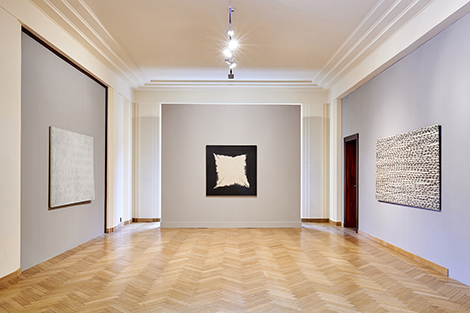
|
|
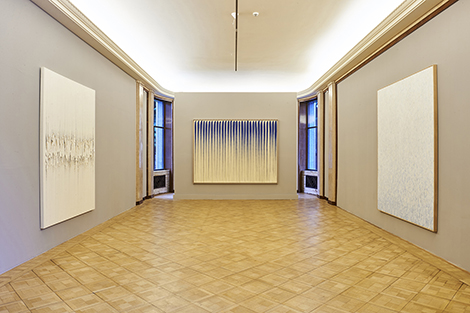
|
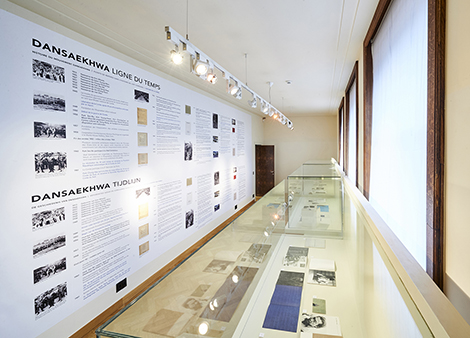
|
|
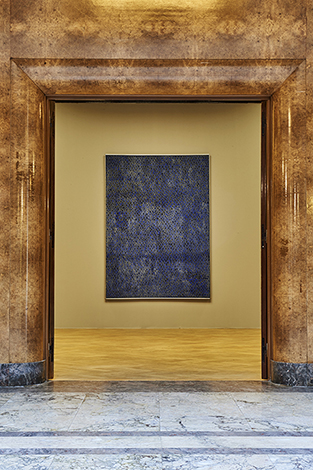
|
MEDIA COVERAGE
일간지
Dansaekhwa in limelight at overseas art hubs
Apr 21, 2016 The Korea Herald
김환기, 박서보, 이우환 등 한국의 단색화 브뤼셀을 물들이다
Mar 22, 2016 Focusnews
벨기에 브뤼셀 보고시안재단 `단색화와 한국 추상미술` 展
Mar 6, 2016 매일경제
단색화 전개 과정과 의미 살펴보다…'과정이 형태가 될 때: 단색화와 한국 추상미술'전
Mar 6, 2016 아주경제
벨기에 브뤼셀서 '단색화와 한국 추상미술' 전시
Mar 6, 2016 연합뉴스
벨기에 브뤼셀서 '단색화와 한국 추상미술' 전시 개최
Mar 6, 2016 여성경제신문
La beauté du minimal à la villa Empain
Mar 2, 2016 La Libre
주간지/웹
WHEN PROCESS BECOMES FORM: DANSAEKHWA AND KOREAN ABSTRACTION [KOREAN]
Mar 21, 2016 DODOOBA
WHEN PROCESS BECOMES FORM: DANSAEKHWA AND KOREAN ABSTRACTION [ENGLISH]
Mar 21, 2016 DODOOBA
DANSAEKHWA: DALLA COREA CON FURORE
Mar 8, 2016 Collezione da Tiffany
Dansaekhwa and Korean Abstraction at Boghossian Foundation in Brussels
Feb 18, 2016 Blouinartinfo


